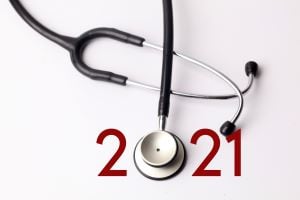Share this
5 healthcare trends investors will be watching in 2021
by Neoteryx Microsampling on Feb 1, 2021 9:00:00 AM
 Just like every other industry, the healthcare sector continues to experience drastic changes. With each new year, it helps to identify the trends that are likely to shape the industry. This way, investors can be on the lookout for new opportunities in health-tech and biotech industries.
Just like every other industry, the healthcare sector continues to experience drastic changes. With each new year, it helps to identify the trends that are likely to shape the industry. This way, investors can be on the lookout for new opportunities in health-tech and biotech industries.
According to healthcare executives and a recent update from this year's Consumer Electronics (CES) show, here are the top trends that will shape healthcare and health-tech in 2021:
1. Alcohol and Drug Screening
The drug and alcohol screening industry is worth approximately $7 billion. There is a growing demand in the workplace and in traffic control settings to test both legal and illegal drugs and substances. It’s predicted the market will continue growing exponentially in the next few years.
Many toxicology research labs have expanded their drug and alcohol studies, thanks to microsampling. Through this procedure, labs can analyze tiny blood samples collected remotely for the presence of over 200 different drugs. Employer screening programs, traffic control agencies, and addiction treatment and recovery centers in some countries may soon be using remote specimen sampling for quick and accurate alcohol and drug screening.
2. Augmented and Virtual Reality Integration
Augmented and virtual reality provide new healthcare options in several areas, such as surgical training programs, treatment approaches like distraction for use in pain management, and to provide supplemental clinical experiences. With specially designed virtual reality (VR) software, medical professionals can view images from a new and detailed perspective. For example, George Washington University Hospital medical personnel recently analyzed lung scans of a COVID-19 patient using VR software.
3. Genomics, Proteomics, and Precision Medicine
Genetic data can help capture, analyze, and sequence various genetic disorders. The aim is to improve RNA/DNA testing through proteomics. This comprehensive study of the entire protein complement of a cell enables the medical research industry to discover better treatments that clinicians can apply. With new artificial intelligence (AI) driving drug discovery processes, it is becoming easier to sort through millions of chemical structures to identify new interventions.
 In the wake of COVID-19, pharmaceutical companies, researchers, and biotech companies have realized the importance of building on traditional methods and enhancing them with new technology.
In the wake of COVID-19, pharmaceutical companies, researchers, and biotech companies have realized the importance of building on traditional methods and enhancing them with new technology.
AI and blockchain technology have made it easier to achieve precision medicine in disease treatment and prevention.
4. Portable Medical Devices
Portable medical devices have significantly influenced how people monitor their health and well-being. These devices provide options for home-based care that can be paired with real-time updates to healthcare providers through bluetooth connectivity and telehealth communications. Portable devices, and even portable health kits for specimen collection, also allow patients to have continuous and convenient monitoring of their own health parameters, without requiring a visit to the hospital or clinic.
Some portable devices and kits that allow for self-monitoring at home include the Mitra® Collection Kits from Neoteryx. Other portable technology that is now in higher demand for research or healthcare includes:
- Accurate scales
- Automated insulin pumps
- Blood pressure monitors
- Wearable heart monitors
- Glucometers
- Other wearables
All these tools are geared to making remote care more effective, which is particularly relevant and important during coronavirus pandemic lockdowns, when patients have to stay at home. Such tools are likely to continue being sought moving forward, as researchers and medical practitioners realize their value in keeping people safe during research studies and providing continuity of care beyond physical barriers.
5. Remote Patient Monitoring
According to U.S. News, telemedicine visits made up 35% of all primary care visits from April-June 2020. Study participants and patients find the telehealth or "tele-research" approach very convenient, as it doesn't require them to take time off work or obtain childcare coverage for appointments.
Through remote patient monitoring, physicians and research coordinators can:
- Adjust medication or treatment through telehealth
- Automate and respond to alerts
- Minimize hospital visits and hospitalizations
- Get a comprehensive and holistic outlook of a patient’s health
- Understand a patient’s biometrics and their monitor progress and adherence to treatment programs

Share this
- Microsampling (206)
- Research, Remote Research (119)
- Venipuncture Alternative (105)
- Clinical Trials, Clinical Research (83)
- Mitra® Device (73)
- Therapeutic Drug Monitoring, TDM (51)
- Dried Blood Spot, DBS (39)
- Biomonitoring, Health, Wellness (30)
- Infectious Disease, Vaccines, COVID-19 (24)
- Blood Microsampling, Serology (23)
- Omics, Multi-Omics (21)
- Decentralized Clinical Trial (DCT) (20)
- Specimen Collection (18)
- Toxicology, Doping, Drug/Alcohol Monitoring, PEth (17)
- Skin Microsampling, Microbiopsy (14)
- hemaPEN® Device (13)
- Preclinical Research, Animal Studies (12)
- Pharmaceuticals, Drug Development (9)
- Harpera Device (7)
- Industry News, Microsampling News (5)
- Antibodies, MAbs (3)
- Company Press Release, Product Press Release (3)
- Environmental Toxins, Exposures (1)
- July 2025 (1)
- May 2025 (1)
- April 2025 (2)
- December 2024 (2)
- November 2024 (1)
- October 2024 (3)
- September 2024 (1)
- June 2024 (1)
- May 2024 (1)
- April 2024 (4)
- March 2024 (1)
- February 2024 (2)
- January 2024 (4)
- December 2023 (3)
- November 2023 (3)
- October 2023 (3)
- September 2023 (3)
- July 2023 (3)
- June 2023 (2)
- April 2023 (2)
- March 2023 (2)
- February 2023 (2)
- January 2023 (3)
- December 2022 (2)
- November 2022 (3)
- October 2022 (4)
- September 2022 (3)
- August 2022 (5)
- July 2022 (2)
- June 2022 (2)
- May 2022 (4)
- April 2022 (3)
- March 2022 (3)
- February 2022 (4)
- January 2022 (5)
- December 2021 (3)
- November 2021 (5)
- October 2021 (3)
- September 2021 (3)
- August 2021 (4)
- July 2021 (4)
- June 2021 (4)
- May 2021 (4)
- April 2021 (3)
- March 2021 (5)
- February 2021 (4)
- January 2021 (4)
- December 2020 (3)
- November 2020 (5)
- October 2020 (4)
- September 2020 (3)
- August 2020 (3)
- July 2020 (6)
- June 2020 (4)
- May 2020 (4)
- April 2020 (3)
- March 2020 (6)
- February 2020 (3)
- January 2020 (4)
- December 2019 (5)
- November 2019 (4)
- October 2019 (2)
- September 2019 (4)
- August 2019 (4)
- July 2019 (3)
- June 2019 (7)
- May 2019 (6)
- April 2019 (5)
- March 2019 (6)
- February 2019 (5)
- January 2019 (8)
- December 2018 (3)
- November 2018 (4)
- October 2018 (7)
- September 2018 (6)
- August 2018 (5)
- July 2018 (8)
- June 2018 (6)
- May 2018 (5)
- April 2018 (6)
- March 2018 (4)
- February 2018 (6)
- January 2018 (4)
- December 2017 (2)
- November 2017 (3)
- October 2017 (2)
- September 2017 (4)
- August 2017 (2)
- July 2017 (4)
- June 2017 (5)
- May 2017 (6)
- April 2017 (6)
- March 2017 (5)
- February 2017 (4)
- January 2017 (1)
- July 2016 (3)
- May 2016 (1)
- April 2016 (2)


No Comments Yet
Let us know what you think